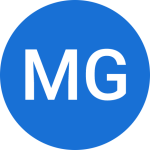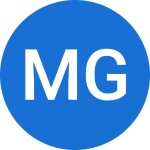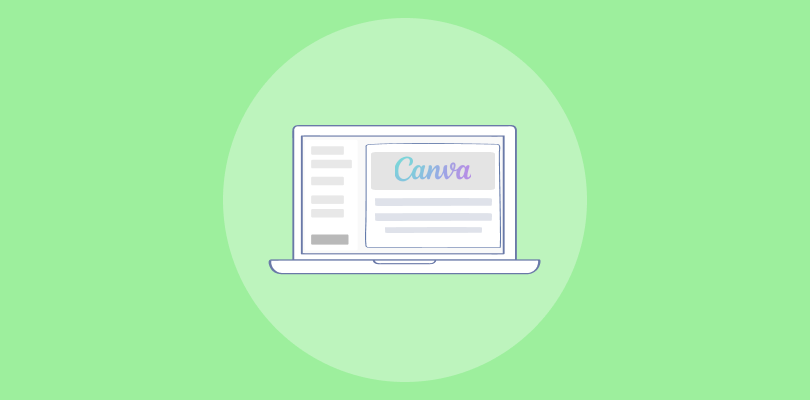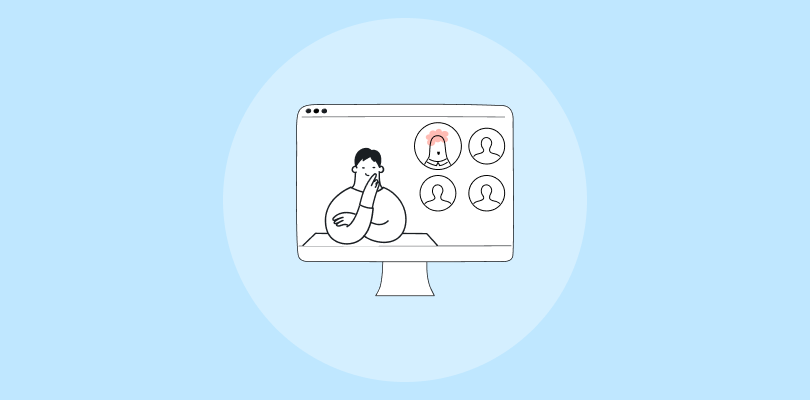Are your webinars falling flat? Feeling like you’re talking to a void? It’s time to shake things up! A webinar isn’t just a presentation — it’s a chance to captivate, engage, and convert your audience.
But what is the right webinar format?
In this blog post, we’ll discuss the best webinar format ideas and show you how to structure sessions that keep your audience hooked.
Ready to transform your webinars into must-attend events?
Let’s dive in!
Top 10 Webinar Formats
Webinars can be incredibly versatile and effective when you choose the right format for your audience. Let’s explore 10 engaging webinar types and formats, each tailored to specific goals and audience needs.
1. Live Training Webinar
Best for: Skill development, professional training, and educational purposes
Live training webinars are instructional sessions that teach specific skills or knowledge. They often include step-by-step guides, live demonstrations, and practical exercises, providing a hands-on learning experience.
This webinar format is particularly effective for complex subjects that benefit from real-time interaction. Attendees can ask questions and get immediate feedback, making the learning process more interactive and effective.
Example:
A software company might offer live training on using their new software, with real-time demonstrations and hands-on practice sessions. This format allows attendees to learn and practice new skills in a guided environment, making the learning process more effective and engaging.
Watch: The 3 Components of a Successful Live Online Course
2. Expert Panel
Best for: Deep dives into complex topics, thought leadership, and industry insights
An expert panel webinar brings together several professionals to discuss various aspects of a specific subject. This webinar format encourages diverse viewpoints and in-depth analysis, making it highly engaging and informative.
It’s dynamic and interactive, as moderators can field questions from the audience, creating a lively discussion.
Hosting an expert panel can position your brand as a thought leader in your industry. By featuring multiple experts, you provide a well-rounded perspective on the topic, which can help attract a knowledgeable and engaged audience.
Example:
Imagine a healthcare organization conducting an expert panel on the latest developments in telemedicine.
By bringing together doctors, technologists, and policymakers, this webinar format provides a platform for diverse expert insights while offering the audience the opportunity to engage directly with these experts.
This approach not only deepens the conversation but also ensures a thorough understanding of the subject matter from multiple perspectives.
3. Online Event or Conference
Best for: Large audiences, industry events, and multi-topic presentations
Online events or conferences replicate in-person conferences featuring keynote presentations, breakout sessions, and networking opportunities.
Webinar types like these are perfect for delivering comprehensive content over several hours or days and allow for extensive audience interaction. Attendees can select sessions that interest them, participate in live Q&A, and network with peers through virtual lounges or chat rooms.
This format can help organizations reach a wide audience, provide diverse content, and create meaningful networking opportunities. It’s especially effective for industry events, product launches, and educational seminars where various experts can share their knowledge in different sessions.
Example:
Martin Bamford, a financial planner turned marketing consultant, used webinars to build his agency, Bamford Media. By hosting monthly webinars, he successfully shifted his focus from a consumer audience to engaging with other financial planners.
This strategy brought a steady flow of inquiries, helping him establish thought leadership in financial services marketing.
4. Automated Webinar
Best for: Scalable presentations, reaching a global audience, and evergreen content.
Automated webinars are pre-recorded sessions that run on a schedule or on-demand. They allow you to deliver consistent, high-quality presentations without being present. This webinar format is ideal for reaching a global audience and for topics that require a polished, consistent delivery.
Automated webinars are particularly useful for evergreen content, such as training sessions or product demonstrations that need to be accessible at any time. They can also free up time for the presenter while still engaging the audience and generating leads.
Example:
John Orian from PlayAtCreation used automated webinars to promote his courses, effectively reaching and engaging with the Boomer generation by offering valuable, consistent content without needing to be live every time.
5. Thought Leadership Webinar
Best for: Establishing authority, sharing visionary ideas, and attracting a high-level audience
Thought leadership webinars position your brand or speakers as industry leaders. These webinars share insights, trends, and forward-thinking webinar ideas that can influence and inspire the audience. This webinar format is excellent for establishing authority and attracting a knowledgeable audience.
Sharing industry insights and future trends helps attract a large audience of professionals eager to learn from experts and stay ahead of industry developments. This approach can significantly enhance your brand’s reputation and credibility.
Example:
Imagine a marketing firm hosting a thought leadership webinar on emerging trends in digital marketing, featuring case studies and future predictions. This format can attract a broad audience keen to gather valuable insights and keep up with industry advancements.
6. Brand Experience Webinar
Best for: Brand building, enhancing customer loyalty, and marketing campaigns.
Brand experience webinars emphasize your brand’s values, culture, and unique selling propositions. This format is designed to create an emotional connection with the audience, often using storytelling and brand narratives to convey a compelling message.
By sharing behind-the-scenes stories, company values, and unique aspects of your brand, you can build a deeper connection with your audience. This webinar format enhances customer loyalty and makes your brand stand out in a crowded market.
Example:
Kolarele Sonaike, a public speaking coach, uses webinars to connect with his audience and build his brand, The Great Speech Consultancy. By sharing his journey and expertise in public speaking, he creates a strong emotional connection with his audience, reinforcing his brand values.
7. Lead Generation Webinar
Best for: Marketing campaigns, growing your customer base, and generating qualified leads
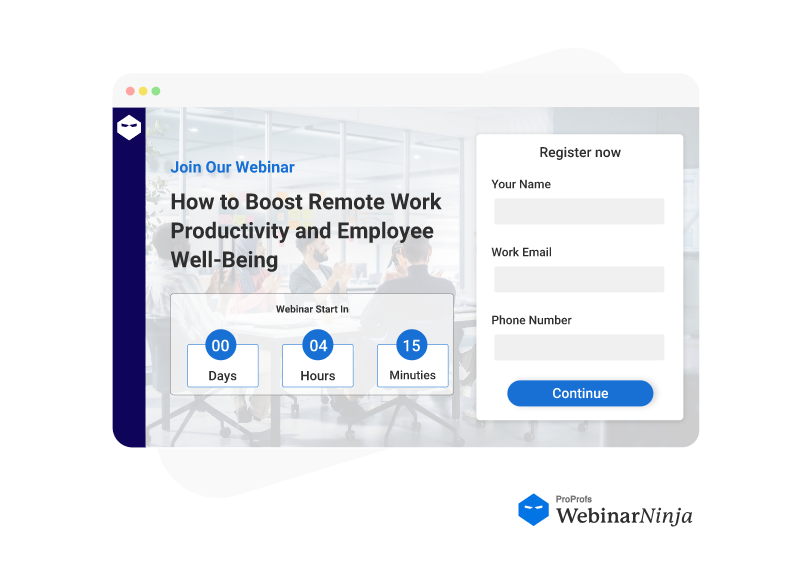
Lead generation webinars are designed to attract potential customers and generate leads. They often offer valuable content in exchange for contact information and include calls to action to encourage further engagement.
These webinars are an excellent way to build your email list and gather leads for your sales team. By providing valuable information, you can attract potential customers and nurture them through the sales funnel.
Pro Tip:
You can use automated email sequences to follow up with attendees, provide additional resources, and guide them through the buying process.
Example:
Amanda Haddaway uses webinars as a lead generation tool for her HR consulting agency. By coupling WebinarNinja with email and social media marketing, she attracts potential clients without having to do hard selling, generating high-quality leads for her business.
8. Community Webinar
Best for: Building a community, networking, and engaging with loyal followers
Community webinars focus on fostering a sense of community among attendees, encouraging interaction, networking, and sharing ideas and experiences. This format is excellent for building loyalty and engagement within a community.
By creating a space where attendees can share their experiences and support each other, you can build a strong, engaged community. This webinar format is particularly effective for membership sites, clubs, and social organizations.
Example:
The Merrymaker Sisters, wellness coaches, use webinars to build a supportive community for their health and fitness programs. By hosting live Yoga/Pilates classes and masterclasses, they create a judgment-free space for their members, promoting self-acceptance and body positivity.
9. Product Demo
Best for: Launching new products, showcasing features, and converting leads into customers
Product demo webinars showcase a product’s features and benefits in a live or recorded format. These webinar types often include live demonstrations, customer testimonials, and Q&A sessions to address potential customers’ queries and provide a comprehensive product overview.
This webinar format is ideal for launching new products or features. By demonstrating the product live, you can show its value in real-time, answer questions, and address potential customers’ concerns.
Example:
A tech company launching a new gadget could host a product demo to showcase its features, followed by a Q&A session. This approach would give potential customers a detailed look at the product and an opportunity to ask questions, increasing the likelihood of conversion.
10. Hybrid Webinar
Best for: Reaching a global audience, providing flexible viewing options, and combining the benefits of live and pre-recorded formats
Hybrid webinars combine elements of live and pre-recorded content, allowing for flexibility and catering to audiences in different time zones or those who prefer on-demand content. This format offers the best of both worlds, providing a rich and flexible viewing experience.
By mixing live and pre-recorded elements, you can reach a wider audience and offer a more flexible viewing experience. This webinar format is particularly effective for global audiences and busy professionals who need the option to watch content on their schedule.
Example:
Imagine a multinational company hosting a hybrid webinar to introduce a new product line. The session starts with a pre-recorded video featuring the CEO detailing the products’ features. Simultaneously, product specialists engage with the audience live, answering questions, conducting polls, and offering exclusive access.
This format ensures consistent information delivery while allowing real-time interaction, maximizing reach and engagement.
Bonus: Webinar Series
Best for: Comprehensive learning programs, long-term engagement, and in-depth topic exploration
A webinar series consists of multiple sessions that cover different aspects of a broader topic. These webinars are spaced over days, weeks, or months, allowing for in-depth exploration and continuous engagement with the audience.
Each session builds on the previous ones, creating a comprehensive learning journey or campaign.
These types of webinar formats are excellent for complex subjects requiring detailed explanations and for keeping your audience engaged over a longer period. Webinars series can also help nurture leads by providing continuous value and touchpoints for your brand.
Example:
A digital marketing company might offer a series of webinars on mastering SEO, each focusing on different aspects such as keyword research, on-page optimization, link building, and analytics.
This approach allows participants to gradually build their skills and apply what they learn incrementally.
By understanding the strengths of each webinar format and aligning them with your goals and audience needs, you can create engaging and effective webinars that deliver real value.
How to Structure a Webinar That Meets Attendees Needs
Crafting a webinar that captivates your audience and meets their needs involves thoughtful planning and execution. Here are some key elements to consider to ensure your webinar is a success:
- Know Your Audience
Start by understanding your attendees’ position in the marketing funnel. Are they new prospects or existing customers? Tailor your content to their needs. Determine what information they find most valuable and align it with your webinar’s primary goal: education, lead generation, or product promotion.
- Create Compelling Content
Content is the core of your webinar. Choose webinar topics that resonate with your audience and provide value. Instead of generic information, offer unique insights or solutions to their problems. For a webinar series, ensure each session builds upon the last, offering a structured learning journey that keeps attendees returning.
Watch: How to Choose a Webinar Topic
Pro Tip:
Crafting an effective webinar script can significantly enhance your presentation’s impact. A well-structured script ensures you cover all critical points while maintaining engagement.
For guidance on creating a compelling webinar script, check out this blog post: How to Write a Perfect Webinar Script (+ Free Template).
- Ensure Accessibility
Accessibility is vital for reaching a diverse audience. Provide closed captions and multiple language options, and ensure your platform is user-friendly for people with disabilities. Making your webinar accessible fosters inclusivity and expands your reach.
- Choose the Right Platform
Selecting the right platform is essential. Look for features that support your webinar goals, like automated email sequences for lead generation or robust analytics for audience insights. A user-friendly platform with reliable support ensures a smooth experience for both presenters and attendees.
Also Read: What Are the Best Webinar Platforms Available Today?
- Practice Effective Delivery
The delivery of your content can significantly impact its reception. Practice your presentation to ensure it flows smoothly and engages the audience. Adapt your delivery style to fit the webinar format, whether a live session, automated webinar, or hybrid.
Use storytelling techniques and clear visuals to enhance understanding and retention. For consistently high-quality visuals, consider using webinar format templates to streamline the design process.
Watch: How to Deliver Perfect Webinar Slide Presentations
- Foster Engagement
Engagement is crucial for a successful webinar. Incorporate interactive elements such as polls, Q&A sessions, and breakout rooms to keep your audience involved.
For expert panels, facilitate lively discussions and encourage audience questions to create a dynamic environment. High engagement keeps attendees interested and invested in your content.
- Invest in Quality Equipment
Quality equipment ensures a professional presentation. Ensure you have a stable internet connection, a high-quality camera, and a clear microphone. Regularly test your setup to avoid technical issues, especially for live sessions where real-time interaction is critical.
Focusing on the above elements can help you create webinars that not only meet but exceed your attendees’ expectations. This approach will help you deliver valuable content, foster engagement, and achieve your webinar goals.
How to Choose the Right Webinar Format
Selecting the right webinar format is key to engaging your audience and achieving your event goals. Here’s a guide to help you make the best choice:
1. Know Your Event Type
First, identify the type of event you are hosting. Is it an educational seminar, a product launch, a lead generation event, or a community-building session? The nature of your event will heavily influence the format you choose.
Examples:
- For a product launch, a live demo webinar format can showcase features and benefits in real time, allowing for immediate audience questions and feedback.
- If you’re hosting an educational seminar, a webinar series can break down complex topics into manageable sessions, providing a deeper dive into each subject.
2. Consider Interaction Level
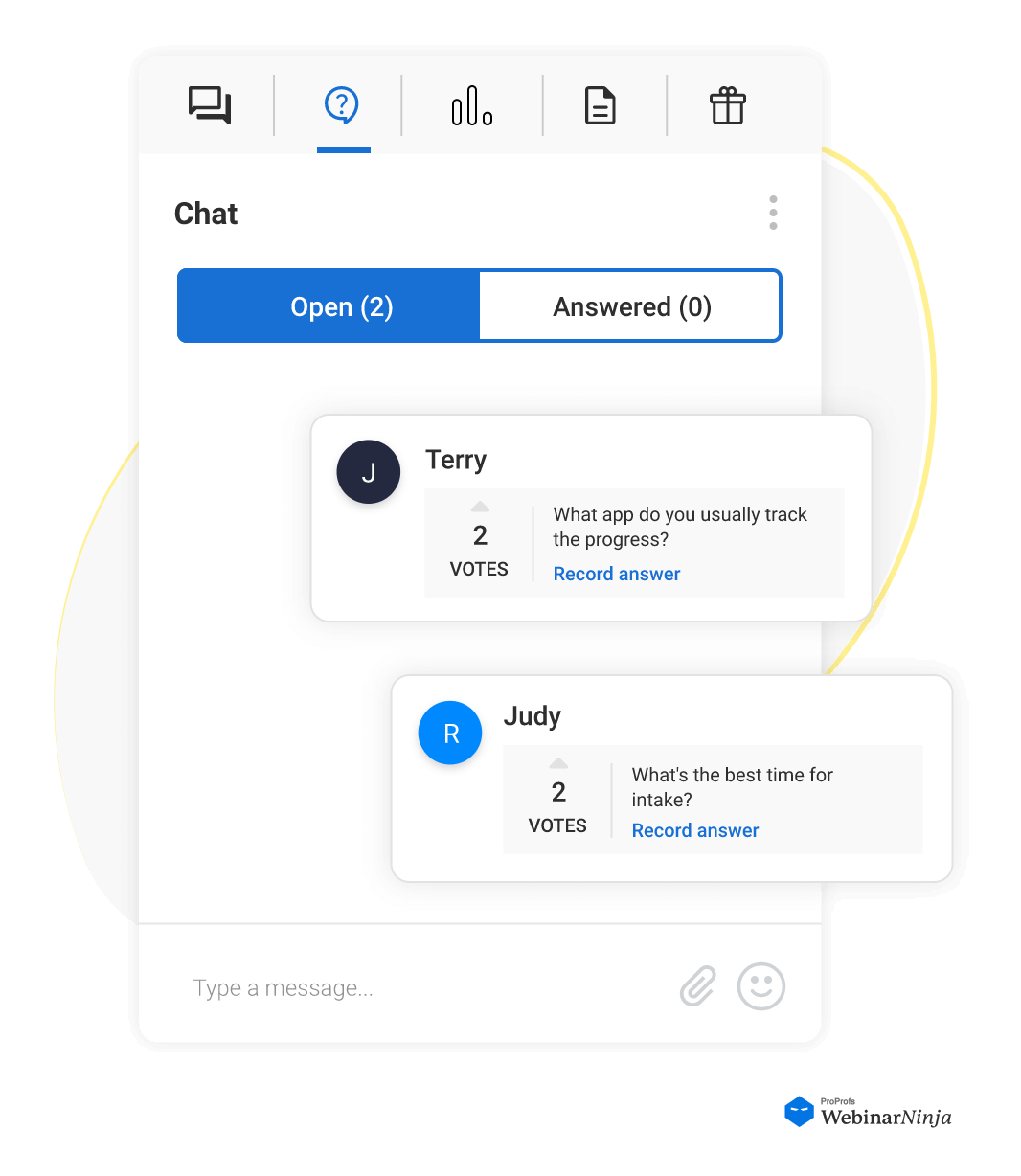
Decide how interactive you want your webinar to be. If real-time engagement and feedback are important, consider live or hybrid formats. For less interactive needs, automated or on-demand webinars might be more appropriate.
Examples:
- For a training session where continuous engagement is needed, a live interactive webinar format with Q&A sessions and polls would be ideal.
- For evergreen content like tutorials or product walkthroughs, an automated webinar that viewers can watch at their convenience works well.
- A hybrid webinar can combine live Q&A segments with pre-recorded content, offering flexibility and interaction.
3. Evaluate Content Depth
Think about the depth and breadth of content you need to cover. For high-level overviews or introductory sessions, a single, focused webinar could be sufficient. For topics that require extensive detail and follow-up, a webinar series might be ideal.
Examples:
- A digital marketing firm might run a webinar series on SEO strategies, breaking down the topic into multiple sessions covering keyword research, on-page optimization, and link building, ensuring a comprehensive understanding over time.
- For a high-level overview of new software features, a single live webinar with a detailed demo and Q&A session could suffice.
4. Assess Audience Size
Consider the number of attendees you expect. Larger audiences might benefit from more structured formats with less direct interaction, such as automated or series webinars. Smaller groups may appreciate more interactive formats where they can ask questions and participate actively. If you’re exploring webinar format ideas, think about the level of engagement your audience needs and tailor your approach accordingly.
Examples:
- For a large audience, an automated webinar can deliver consistent content without overwhelming the host with real-time interactions.
- For a smaller, focused group, a live Q&A or workshop webinar format might be more effective, allowing for direct engagement and personalized responses.
5. Think About Time Zones
If your audience is spread across different time zones, you might need a webinar format that accommodates this. Automated webinars or on-demand content can be accessed anytime, making it convenient for attendees worldwide.
Examples:
- For a global audience, offering an automated webinar ensures that everyone can access the content at a time that suits them.
- For regional audiences, a live webinar scheduled at a time that is convenient for most attendees can enhance participation and engagement.
By considering these factors, you can select a webinar format that best aligns with your and your audience’s needs. Using webinar format templates can also streamline the planning process, ensuring a successful and engaging experience for your attendees.
Pick the Perfect Webinar Format to Engage and Succeed
While there are so many types of webinar formats around, choosing the right one maximizes engagement and achieves your event goals. You can select the best webinar format by understanding your audience, setting clear objectives, and considering factors such as interaction level, content depth, audience size, and time zones.
Whether it’s a demo for product launches, in-depth educational content, or a presentation targeting global reach, the right format will enhance the attendee experience and drive your desired outcomes.
WebinarNinja offers a versatile and easy-to-use platform that supports various webinar formats. It ensures you have the tools needed to engage your audience effectively. With features like interactive tools, automated email sequences, and robust analytics, WebinarNinja makes it simple to host professional and impactful webinars.
Want to host a webinar for free?
Use WebinarNinja to teach, improve marketing, and grow your sales.
